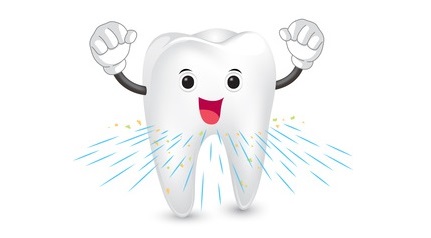Research team uses nanoparticles to break up plaque and prevent cavities

The bacteria that live in dental plaque and contribute to tooth decay often resist traditional antimicrobial treatment, as they can "hide" within a sticky biofilm matrix. A new strategy conceived by University of Pennsylvania researchers took a more sophisticated approach. Instead of simply applying an antibiotic to the teeth, they took advantage of the pH-sensitive and enzyme-like properties of iron-containing nanoparticles to catalyze the activity of hydrogen peroxide, a commonly used natural antiseptic. The activated hydrogen peroxide produced free radicals that were able to simultaneously degrade the biofilm matrix and kill the bacteria within, significantly reducing plaque and preventing the tooth decay, or cavities, in an animal model.
The work built off a seminal finding by Gao and colleagues, published in 2007 in Nature Nanotechnology, showing that nanoparticles, long believed to be biologically and chemically inert, could in fact possess enzyme-like properties. In that study, Gao showed that an iron oxide nanoparticle behaved similarly to a peroxidase, an enzyme found naturally that catalyzes oxidative reactions, often using hydrogen peroxide. Even using a very low concentration of hydrogen peroxide, the process was incredibly effective at disrupting the biofilm, adding nanoparticles increased the efficiency of bacterial killing more than 5,000-fold.
Gao had found that the nanoparticles had no catalytic activity at neutral or near-neutral pH of 6.5 or 7, physiological values typically found in blood or in a healthy mouth. But when pH was acidic, closer to 5, they become highly active and can rapidly produce free radicals. The scenario was ideal for targeting plaque, which can produce an acidic microenvironment when exposed to sugars.
More information: Lizeng Gao et al. Intrinsic peroxidase-like activity of ferromagnetic nanoparticles, Nature Nanotechnology (2007). DOI: 10.1038/nnano.2007.260
Lizeng Gao et al. Nanocatalysts promote Streptococcus mutans biofilm matrix degradation and enhance bacterial killing to suppress dental caries in vivo, Biomaterials (2016). DOI: 10.1016/j.biomaterials.2016.05.051
Source: phys.org
Image source: Fotolia